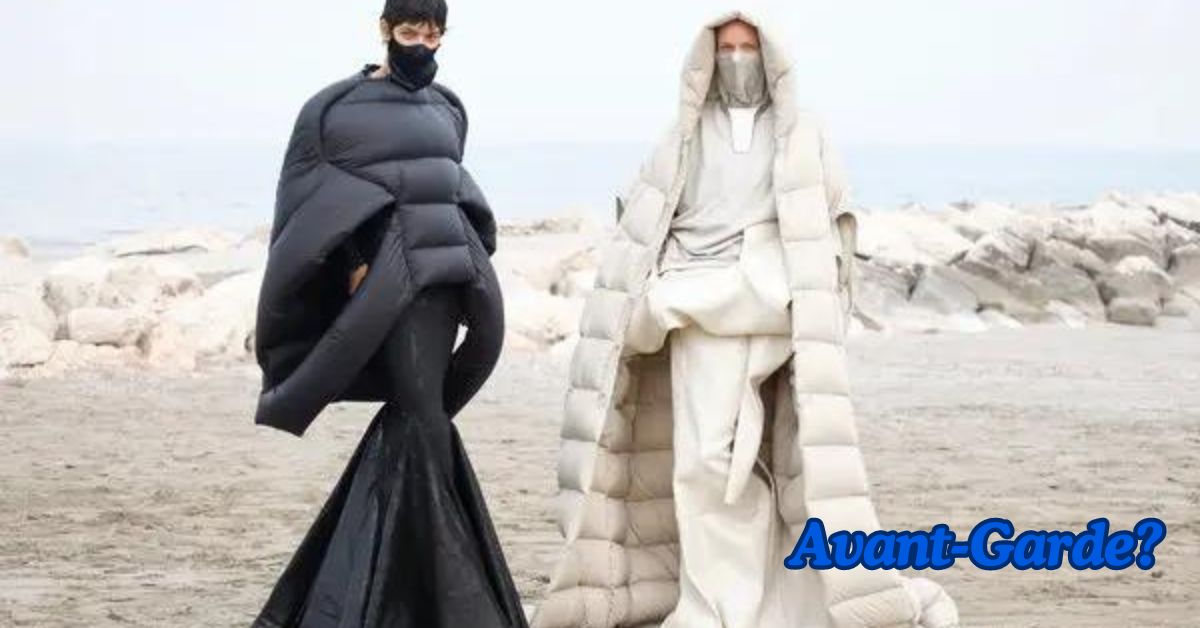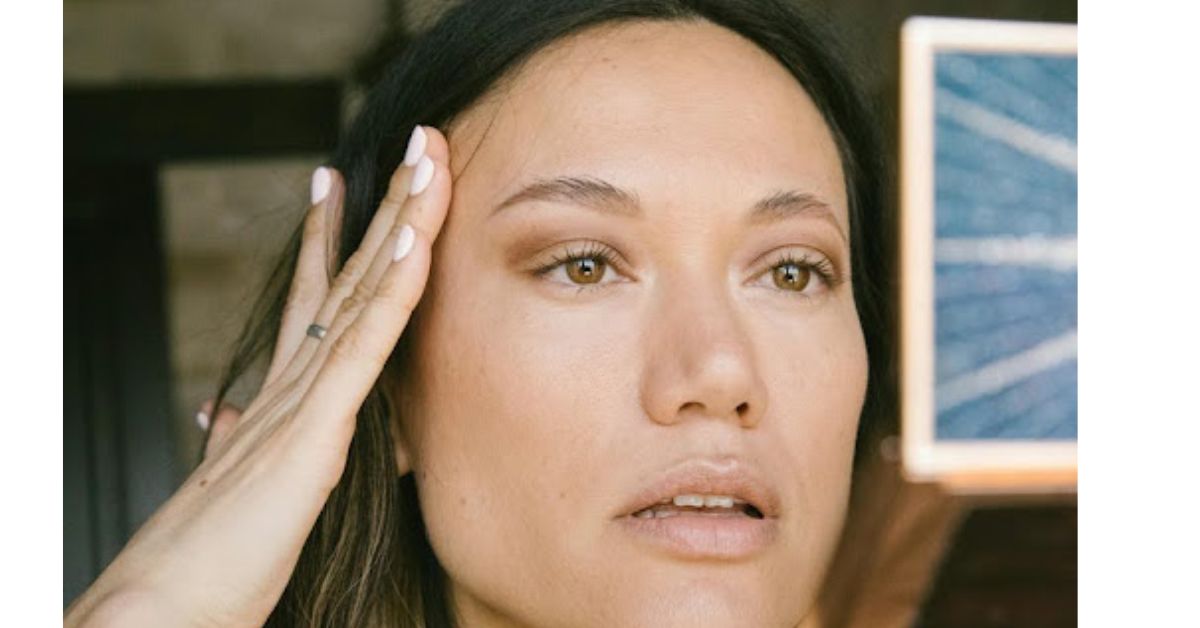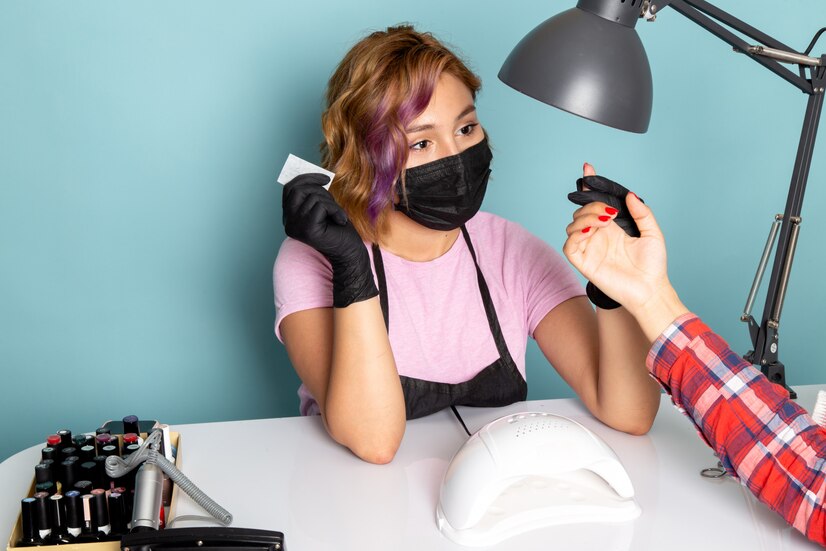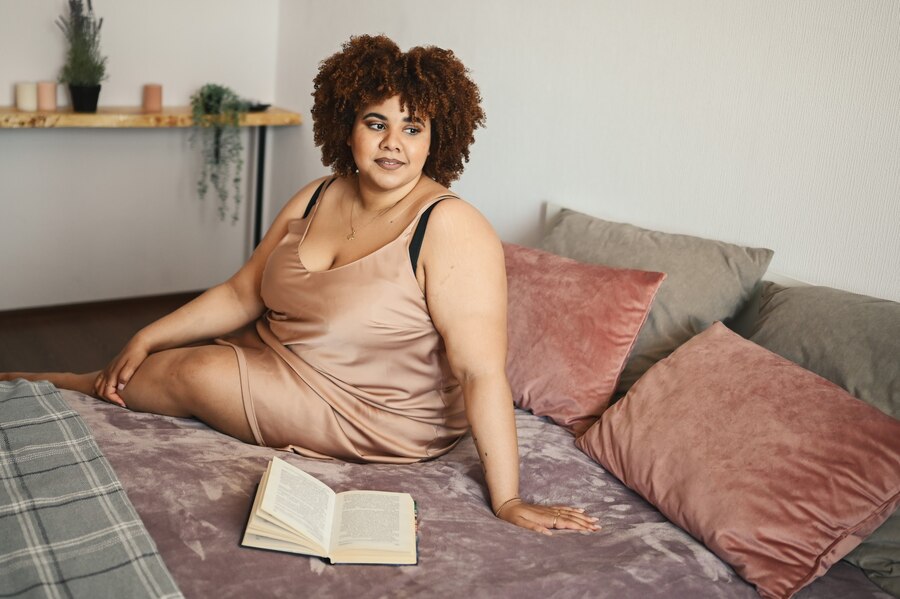FASHION
What Material Is Used for Avant-Garde?

Avant-garde, a term derived from the French for “vanguard” or “advance guard,” represents a movement that pushes the boundaries of traditional norms and explores new, unconventional approaches. In fashion, art, and design, avant-garde materials play a crucial role in shaping the unique and experimental aesthetics associated with this genre. This article delves into the materials used in avant-garde creations, examining their role in defining and revolutionizing the field.
Understanding Avant-Garde Aesthetics
- Defining Avant-Garde Avant-garde is characterized by its innovative and often radical approach to art, design, and fashion. It challenges conventional norms and embraces experimentation, leading to the use of unconventional materials and techniques.
- The Role of Material in Avant-Garde Design Materials are central to avant-garde work, serving not only as functional elements but also as expressions of the artist’s or designer’s vision. The choice of materials can dramatically influence the overall impact and originality of a piece.
Key Materials in Avant-Garde Fashion
- Experimental Fabrics Avant-garde fashion often utilizes experimental fabrics that are not commonly seen in mainstream clothing. These can include:
- Neoprene: Known for its durability and flexibility, neoprene is used to create sculptural and structured garments that challenge traditional clothing silhouettes.
- Metal Mesh: Provides a futuristic and industrial look, often used in avant-garde fashion to create bold and statement-making pieces.
- 3D-Printed Materials: Allow for complex and customized designs, enabling designers to create intricate patterns and textures that were previously impossible.
- Unconventional Textures Avant-garde fashion explores textures that are unconventional and tactile, such as:
- Faux Fur: Used to create dramatic, textured effects without the ethical concerns associated with real fur.
- Plastic and Vinyl: Offer a sleek, glossy finish and are often used to make a strong visual statement.
Avant-Garde Art and Sculpture Materials
- Mixed Media Avant-garde art often incorporates mixed media, combining traditional and non-traditional materials to create new forms and concepts:
- Found Objects: Everyday items repurposed into art pieces, challenging notions of value and aesthetics.
- Industrial Materials: Such as concrete, metal, and glass, which are used to create sculptures and installations that push the boundaries of traditional art forms.
- Innovative Mediums Artists in the avant-garde movement frequently experiment with new mediums:
- Digital and Virtual Materials: Incorporating digital projections, augmented reality, and virtual environments to create immersive art experiences.
- Organic Materials: Such as natural fibers, plants, and biodegradable substances, to explore themes of sustainability and nature.
Avant-Garde Architecture and Design Materials
- High-Tech Materials Avant-garde architecture often employs cutting-edge materials to create futuristic and innovative designs:
- Smart Glass: Glass that can change its properties in response to environmental conditions, offering dynamic and adaptable architectural solutions.
- Carbon Fiber: Lightweight and strong, used to create sleek, modern structures that push the limits of traditional building materials.
- Sustainable Materials The avant-garde movement also embraces sustainability:
- Recycled Materials: Such as reclaimed wood and metal, are used to create eco-friendly designs that challenge wasteful practices.
- Green Roofs and Walls: Utilizing living plants to enhance building aesthetics and promote environmental sustainability.
The Impact of Material Choice on Avant-Garde Works
- Enhancing Artistic Vision The choice of material can significantly enhance the artistic vision of avant-garde work, allowing for the exploration of new textures, forms, and functions.
- Pushing Boundaries Avant-garde materials often push the boundaries of what is considered possible, leading to innovative and unexpected outcomes that challenge traditional perceptions.
Conclusion
Materials play a pivotal role in avant-garde fashion, art, and design. By incorporating experimental fabrics, mixed media, high-tech solutions, and sustainable options, avant-garde creators push the boundaries of traditional norms and explore new possibilities. These materials not only define the aesthetics of avant-garde work but also contribute to its revolutionary and boundary-pushing nature.
FAQs
- What makes a material avant-garde?
- A material is considered avant-garde if it is unconventional, experimental, and challenges traditional uses and aesthetics.
- How does neoprene contribute to avant-garde fashion?
- Neoprene’s flexibility and durability allow designers to create sculptural and innovative garment designs that defy traditional clothing shapes.
- What role do recycled materials play in avant-garde design?
- Recycled materials promote sustainability and offer a way to create unique designs while addressing environmental concerns.
- How are digital and virtual materials used in avant-garde art?
- Digital and virtual materials enable artists to create immersive and interactive experiences, expanding the boundaries of traditional art forms.
- Why are high-tech materials important in avant-garde architecture?
- High-tech materials like smart glass and carbon fiber allow architects to design futuristic structures that push the limits of conventional building materials.
FASHION
Is Rhinoplasty Recovery Really That Painful? Here’s the Truth

When considering rhinoplasty, it’s only natural to wonder about the recovery process. Many people have concerns about potential pain and discomfort during healing, but how challenging is it, really? Here’s an honest look at what you can expect when you choose Rhinoplasty by Feel Beautiful in San Diego, from pain levels to tips for a smooth recovery.
The Reality of Pain After Rhinoplasty: Breaking Down the Myths
While rhinoplasty recovery does come with some discomfort, it’s often less intense than people imagine. Typically, patients experience mild to moderate soreness rather than outright pain. Bruising and swelling are common, but advancements in techniques, like those used at Feel Beautiful Aesthetic Procedures, have helped make recovery smoother than ever before.
What Most Patients Feel in the First Few Days
In the first few days, it’s normal to feel a tight or stuffy sensation around the nose. This period is when swelling is at its peak. Fortunately, most surgeons prescribe medication to keep any discomfort manageable, allowing you to rest more comfortably.
Tips for Managing Pain and Swelling
Managing post-surgery pain effectively can help make your recovery experience more comfortable. Here are some practical tips:
- Rest and Elevate: Resting with your head elevated can significantly reduce swelling and relieve pressure.
- Stay Cool: Applying cold compresses to the cheeks (not directly on the nose) can provide relief and minimize bruising.
- Follow Medication Guidelines: Take all prescribed pain relievers as directed, but avoid over-the-counter medications that can interfere with healing.
- Limit Physical Activity: Avoid strenuous activities for the first few weeks to promote safe healing.
Common Questions About Rhinoplasty Recovery
How Long Does Full Recovery Take?
While most swelling subsides within a few weeks, it can take up to a year for your nose to fully settle into its new shape. Visible signs of recovery, however, are much quicker, allowing you to enjoy results sooner than you might think.
Can I Go Back to Work Quickly?
Many patients are surprised to learn they can return to work within a week or two, depending on their comfort level and job demands.
Wrapping Up: Embracing Your New Look with Confidence
Rhinoplasty recovery may feel daunting, but with the right preparation and care, it’s very manageable. As you follow your surgeon’s guidance and practice patience, you’ll find that the brief recovery is well worth the beautiful, long-lasting results. Ready to learn more about your options? Reach out to the expert team at Feel Beautiful for personalized guidance on the rhinoplasty journey.
FASHION
Gel X: Discover the Best Nails in Phoenix at Element Nail Bar

For those seeking durable, stylish gel x nails, Element Nail Bar in Phoenix is the go-to destination. Known for delivering the best nails in phoenix, this salon combines skilled artistry, high-quality products, and a relaxing environment to provide clients with beautiful, lasting results. Whether you’re looking for a trendy Gel X set or a classic manicure, Element Nail Bar offers an exceptional experience tailored to your style.
Element Nail Bar specializes in Gel X nails, a popular option that delivers a natural look with enhanced durability. Here’s why this Phoenix salon is a top choice for Gel X nails and more:
- Expert Technicians: The team at Element Nail Bar includes skilled professionals who excel at creating flawless Gel X nails, ensuring each client receives a precise and stunning result.
- High-Quality Products: Using premium, non-toxic products, Element Nail Bar provides long-lasting nails that maintain their beauty and strength.
- Focus on Cleanliness: Hygiene is essential, and Element Nail Bar maintains strict cleaning protocols to create a safe and comfortable environment for every client.
Gel X nails are ideal for clients seeking both style and strength. Here’s what makes Gel X nails from Element Nail Bar exceptional.
Each set of Gel X nails is customized to the client’s preferences, allowing for a range of styles from natural to bold designs. The technicians work closely with clients to create nails that reflect their vision and style.
Element Nail Bar offers a variety of options to enhance the Gel X experience, staying updated with the latest trends and techniques to provide modern, fashionable results. This dedication to contemporary nail care has made it a popular choice for those wanting the best nails in Phoenix.
The salon’s relaxing atmosphere adds to the overall experience, providing a welcoming retreat where clients can unwind. Element Nail Bar’s inviting ambiance makes each visit an enjoyable escape.
With luxury services at accessible prices, Element Nail Bar provides high-quality Gel X nails without a premium cost. This balance of excellence and affordability has earned it a strong reputation in Phoenix.
For clients looking to complement their Gel X nails, Element Nail Bar offers a range of additional services:
Classic and Deluxe Manicures and Pedicures: Choose from a variety of treatments that include nail shaping, cuticle care, and soothing massages. Deluxe options add extra hydration, leaving hands and feet feeling soft and rejuvenated.
Custom Nail Art: For clients interested in unique designs, Element Nail Bar provides custom nail art that can be incorporated into any Gel X set. From simple accents to elaborate patterns, the salon’s artists bring creativity to every manicure.
Organic Nail Treatments: For those interested in a natural approach, Element Nail Bar offers organic treatments using gentle, eco-friendly products. These options are ideal for clients who prioritize sustainable beauty and gentle care.
When choosing a salon for Gel X nails, consider these factors to ensure an exceptional experience:
- Read Client Reviews: Reviews provide insights into a salon’s quality and customer satisfaction. Element Nail Bar’s positive feedback highlights its dedication to high-quality results.
- Evaluate Service Variety: A comprehensive service menu allows clients to enjoy all their nail care needs in one location. Element Nail Bar’s offerings cover both traditional and advanced nail treatments.
- Ensure Cleanliness Standards: Hygiene is crucial for a safe salon experience. Element Nail Bar’s commitment to cleanliness guarantees a sanitary, comfortable visit.
- Look for Skilled Technicians: Experienced staff make all the difference in achieving beautiful, lasting results. Element Nail Bar’s team is known for their expertise, making them a trusted choice for Phoenix locals.
Ready to try Gel X nails or enjoy the best nails in Phoenix? Visit Element Nail Bar for an exceptional service that combines style, comfort, and professional care. From custom designs to classic looks, this salon offers everything you need for stunning, well-maintained nails.
FASHION
Embracing Plus-Size Lingerie With Confidence

The fashion landscape is ever-evolving, and nothing quite illustrates this like the rise of plus-size lingerie. This niche has become a powerful movement, catalyzing change and promoting inclusivity. As the industry wakes up to the diversity of body shapes and sizes, plus-size lingerie emerges as a trend and an empowering statement. If you’ve ever felt uncertain about exploring the world of plus-size lingerie, there’s never been a better time to discover its allure. Below, we’ll delve into the reasons behind its surge in popularity and how it champions positivity and self-acceptance.
The Power of Choice: Finding Your Plus-Size Lingerie Style
Navigating the range of plus-size lingerie options can be an exhilarating endeavor. The first step is defining personal style. Are you drawn to the delicate lace of a classic babydoll, or do racy corsets ignite your spirit? Understanding your preferences is key to finding fabulous lingerie that makes you feel invincible.
As you explore the broad selection, you’ll notice pieces that cater to every mood and occasion. A fun and flirty chemise could be perfect for a romantic night, while a supportive plunge bra offers confidence under your workwear. Plus-size lingerie is about variety and having the freedom to choose without compromise.
Beyond aesthetics and style, it is crucial to prioritize pieces that offer the right fit. Well-fitting lingerie can enhance your natural shape and provide a comfortable base for any outfit. Fortunately, brands specializing in plus sizes are acutely aware of this and often offer comprehensive sizing guides to aid your selection.
Finding the right lingerie can be transformative. It’s an intimate experience of self-expression, and when your outerwear aligns with your inner confidence, it shows. From sleek, minimalist designs to bold, adventurous patterns, let your lingerie be an extension of your personality. For more inspiration, Google “lingerie plus size” to explore a variety of styles and find the perfect fit for you.
Body Positivity: How Plus-Size Lingerie Enhances Self-Love
The intersection of plus-size lingerie and body positivity cannot be overstated. By embracing these garments, women of all sizes can break free from the cycle of negative self-image. High-quality, well-designed lingerie can reassure you that everybody is worthy of adornment and celebration.
Society has conditioned many to view their bodies through a critical lens, but plus-size lingerie stands as a bold counteraction to these perceptions. Finding a piece that fits perfectly and encapsulates your essence is a profound moment of self-acceptance. It is a personal affirmation that you are beautiful, just as you are, without needing to conform to anyone else’s standards.
Plus-size lingerie is more than just clothing; it’s an emblem of empowerment. It’s about taking control of your body narrative and rewriting it with kindness and positivity. Curvy women worldwide are discovering that lingerie isn’t reserved for the few – it’s a source of joy and self-love for everybody.
Every strap adjusted, every hook fastened, is a step towards loving the skin you’re in. It’s a celebration of curves, edges, and all the marvelous details that make up an individual. By slipping into lingerie designed for your body, you’re embracing a powerful act of self-care.
Navigating the Online Space for Plus-Size Lingerie Shopping
The digital era has made shopping for plus-size lingerie more accessible than ever. Online stores offer an expansive range of styles, sizes, and colors, all from the comfort of your home. However, the convenience of digital browsing comes with the challenge of finding trustworthy brands prioritizing quality and fit.
When shopping online, one must diligently research brands and read customer reviews. Seek out companies specializing in plus-size lingerie, as they are more likely to understand the nuances of curvy body types. Look for retailers that provide detailed sizing information, easy returns, and customer service that helps with questions or fit issues.
An essential part of online lingerie shopping is measuring yourself correctly. Most websites have sizing guides that correlate with their products, so take the time to ensure you’re ordering the right size. Accurate measurements can mean the difference between a stunning ensemble that enhances your figure and a mistaken purchase that doesn’t do your curves justice.
Another tip for online shoppers is to look for interactive features such as virtual fittings or chats with stylists. Such services can enhance your shopping experience and provide a level of personalization akin to an in-store visit. Brands that go the extra mile to connect with their customers often deliver better shopping experiences.
Altogether, plussize lingerie represents a powerful shift toward inclusivity and self-love, offering women the freedom to embrace their bodies confidently. As the industry grows, it fosters empowerment through choice, comfort, and celebrating all body types.

 Cartoon9 months ago
Cartoon9 months agoUnlocking the Potential of Nekopoi.care: A Comprehensive Guide

 Game8 months ago
Game8 months agoExploring Aopickleballthietke.com: Your Ultimate Pickleball Destination

 BUSINESS8 months ago
BUSINESS8 months agoWhat Companies Are In The Consumer Services Field

 TECHNOLOGY7 months ago
TECHNOLOGY7 months agoThe Guide to Using Anon Vault for Secure Data Storage

 HOME IMPROVEMENT9 months ago
HOME IMPROVEMENT9 months agoVtrahe vs. Other Platforms: Which One Reigns Supreme?

 ENTERTAINMENT9 months ago
ENTERTAINMENT9 months agoThe Epic Return: Revenge of the Iron-Blooded Sword Hound

 HEALTH9 months ago
HEALTH9 months agoUnveiling the Mystery of Pikruos: A Comprehensive Guide

 HOME IMPROVEMENT9 months ago
HOME IMPROVEMENT9 months agoExploring the Events of 2023-1954: A Look Back in Time
















